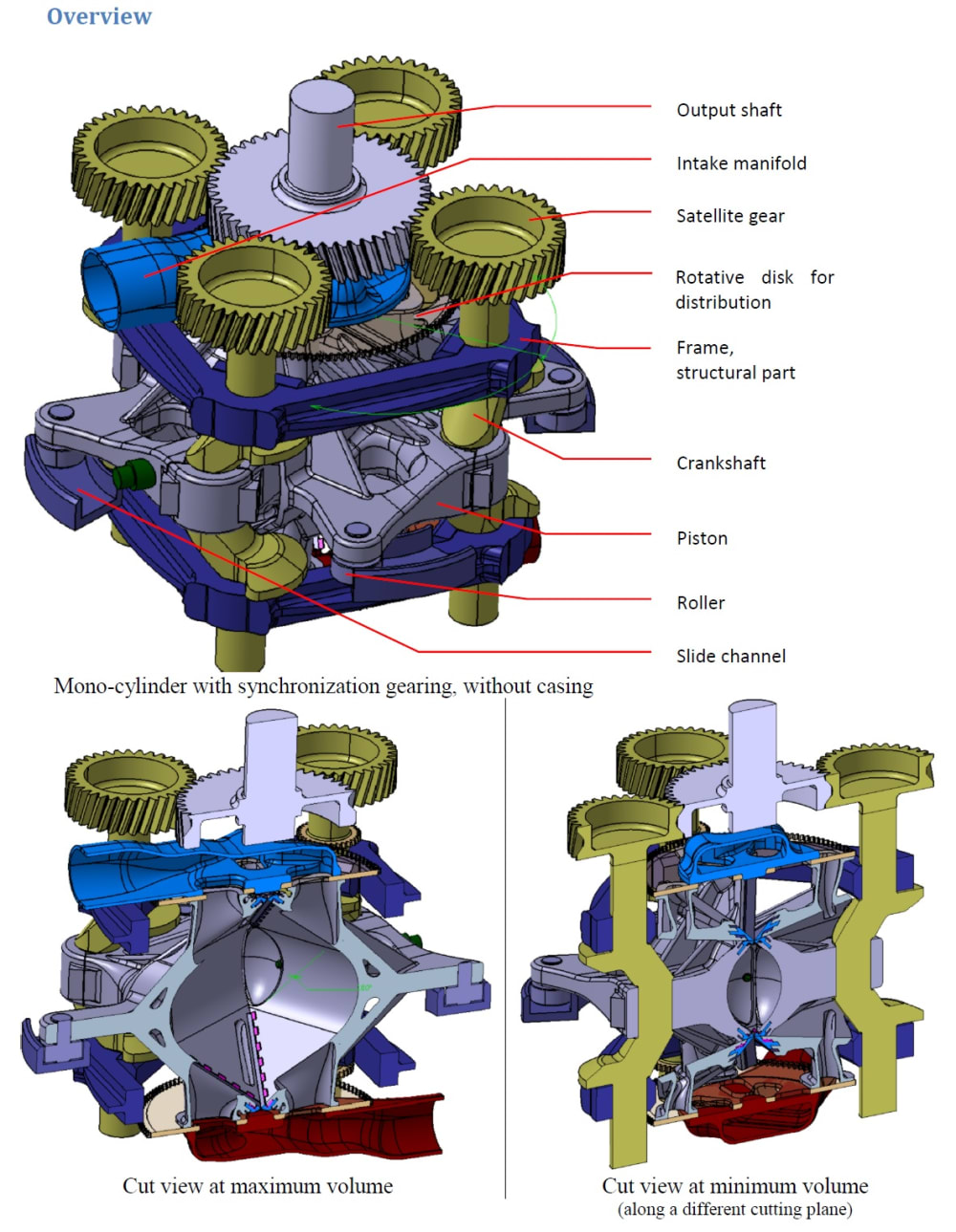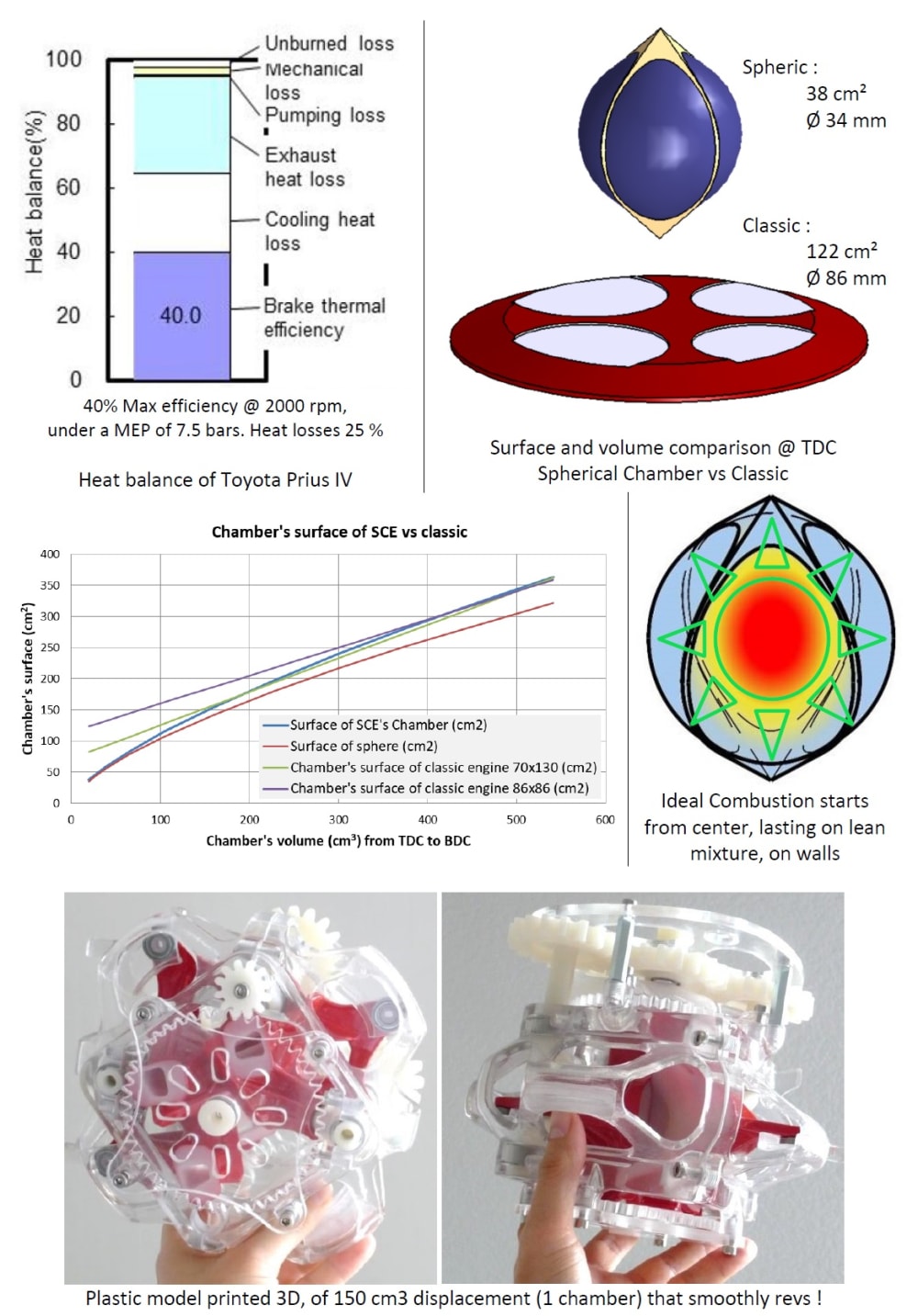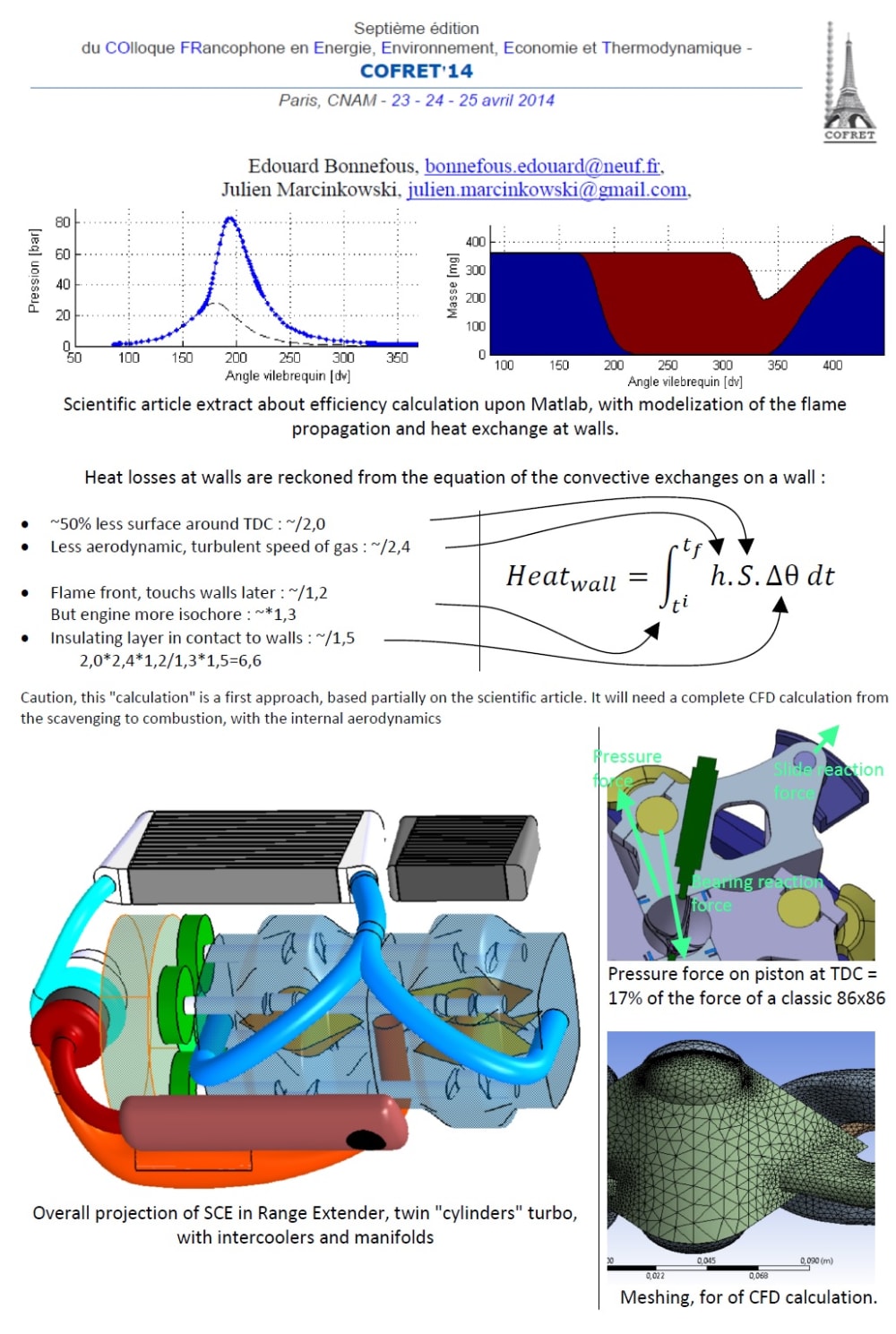In the current world with limited resources, undergoing global warming, the economical solutions with environmental low impact must be implemented. On a less (fossil) carbon mobility, the Spherical Chamber Engine (SCE) takes up the challenge!
It is an internal combustion engine, characterized by a spherical combustion chamber, reaching unmatched efficiency, increased by ~37%. Thanks to its exclusive competitive advantage, it can address multiple markets. Used as a range extender, it could accelerate widely the deployment of electric vehicles, lighter with smaller batteries. It suits well also to automobile parallel hybridization, as in aeronautical propulsion, ideally up to 500 horsepower, for VTOLs, new aircrafts or by retrofitting some turbines.
Its genesis ensues from analyzing the engines and concepts of laboratories and start-ups, showing high potential for improvement by decreasing the surface / volume ratio (S/V) of the combustion chamber.
Today the best cars 's engines reach ~40% of efficiency (50% in Formula One car), while they can claim ~68%, according to calculation upon laws of thermodynamic on Otto/ Humphrey cycle.
The difference is mainly due to heat losses at walls, in the combustion chamber from 25 to 33%, that the SCE slashes down geometrically ~2 times deeper than re-emerging opposed pistons!
At top dead center, a spherical combustion chamber divides by up to ~3 its surface, therefore losses, compared to the classic piston cylinder.
As much drop in the forces of a shorter mobile coupling. Therefore lighter.
There are induced bonuses : less turbulence thanks to a shorten front flame distance and less convection at wall because combustion moves radially, very lean burn at walls and stratified charge better enhanced.
Consequently, the heat losses in the walls are divided by ~6 ! Thus mechanical efficiency reaches ~60%!
To approach this geometric ideal of the "expandable" sphere, each SCE's chamber uses 4 pistons each driven by a crankshaft, guided by a slide and which brushed against each other, without contacting, in an unprecedented tacking movement. A smart sealing closes the, so confined "rounded octahedron" volume of the chamber. Intake and exhaust are ensured by ports, during a uniflow scavenging, thanks to rotative disks that liberate the timing port diagram, allowing a beneficial over expansion power stroke (Miller - Atkinson), making quieter exhaust.
It results in compactness, high specific displacement (2-stroke similar), good balance and less body noise. Pollution is controlled through a classical 3-ways catalysis.
The SCE, preferably sparked than compression-ignited, can be designed for all fuels : diesel, gasoline, gas, (bio-)methane, (bio-)ethanol, methanol, ammonia and even hydrogen!
It is mechanics ! so common materials are used. The more accurate parts remain machinable.
Conveniently the complex shaped pistons are made in additive manufacturing. Never mind AM is more expensive, efficiency improvement matters far more as over its lifetime a car engine burns in gasoline ~20 times its cost!
Its core architecture patent (WO2015001503A1) is granted internationally, proving novelty and inventiveness, as it re-imagines the tricentennial piston - cylinder and connecting rod !
Video
Like this entry?
-
About the Entrant
- Name:Edouard Bonnefous
- Type of entry:individual
- Patent status:patented








